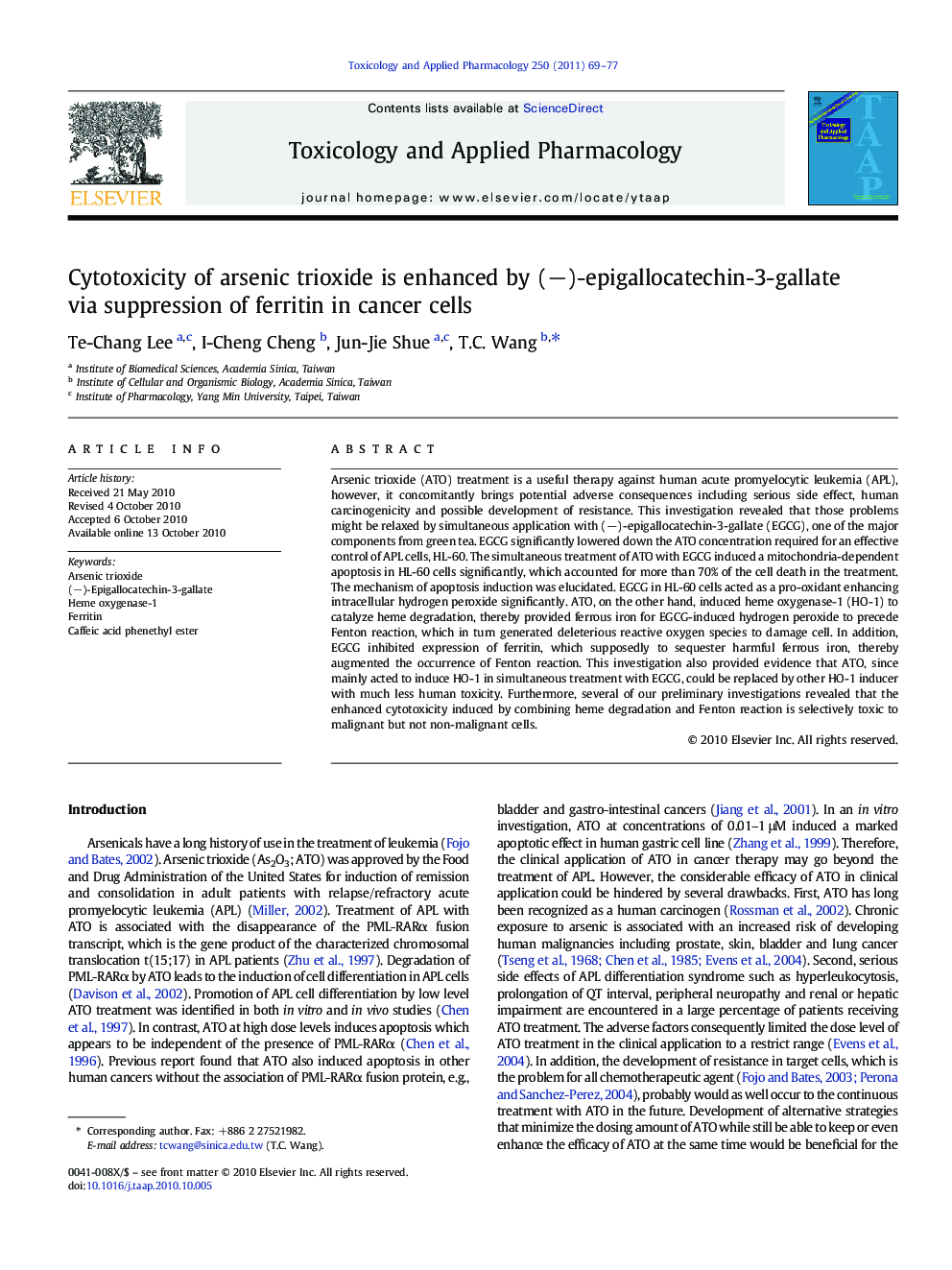| کد مقاله | کد نشریه | سال انتشار | مقاله انگلیسی | نسخه تمام متن |
|---|---|---|---|---|
| 2570059 | 1128566 | 2011 | 9 صفحه PDF | دانلود رایگان |

Arsenic trioxide (ATO) treatment is a useful therapy against human acute promyelocytic leukemia (APL), however, it concomitantly brings potential adverse consequences including serious side effect, human carcinogenicity and possible development of resistance. This investigation revealed that those problems might be relaxed by simultaneous application with (−)-epigallocatechin-3-gallate (EGCG), one of the major components from green tea. EGCG significantly lowered down the ATO concentration required for an effective control of APL cells, HL-60. The simultaneous treatment of ATO with EGCG induced a mitochondria-dependent apoptosis in HL-60 cells significantly, which accounted for more than 70% of the cell death in the treatment. The mechanism of apoptosis induction was elucidated. EGCG in HL-60 cells acted as a pro-oxidant enhancing intracellular hydrogen peroxide significantly. ATO, on the other hand, induced heme oxygenase-1 (HO-1) to catalyze heme degradation, thereby provided ferrous iron for EGCG-induced hydrogen peroxide to precede Fenton reaction, which in turn generated deleterious reactive oxygen species to damage cell. In addition, EGCG inhibited expression of ferritin, which supposedly to sequester harmful ferrous iron, thereby augmented the occurrence of Fenton reaction. This investigation also provided evidence that ATO, since mainly acted to induce HO-1 in simultaneous treatment with EGCG, could be replaced by other HO-1 inducer with much less human toxicity. Furthermore, several of our preliminary investigations revealed that the enhanced cytotoxicity induced by combining heme degradation and Fenton reaction is selectively toxic to malignant but not non-malignant cells.
Journal: Toxicology and Applied Pharmacology - Volume 250, Issue 1, 1 January 2011, Pages 69–77